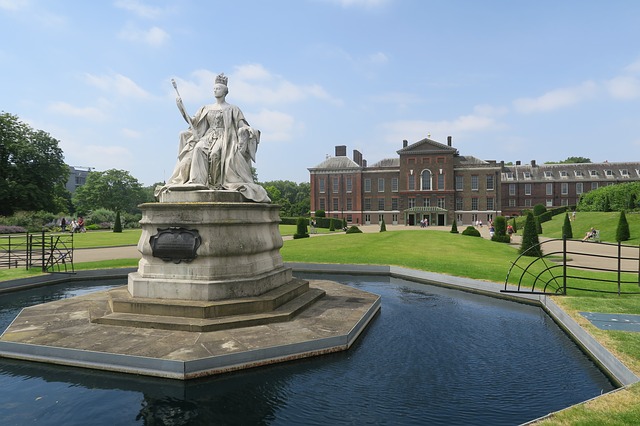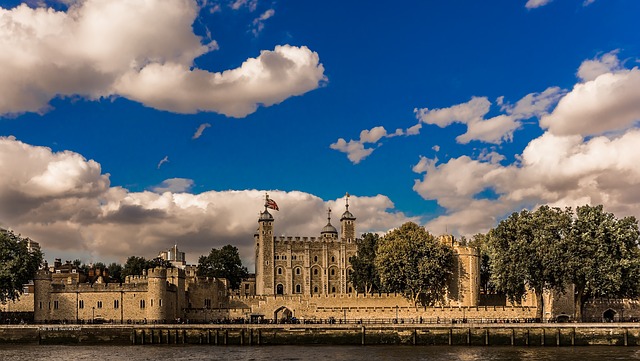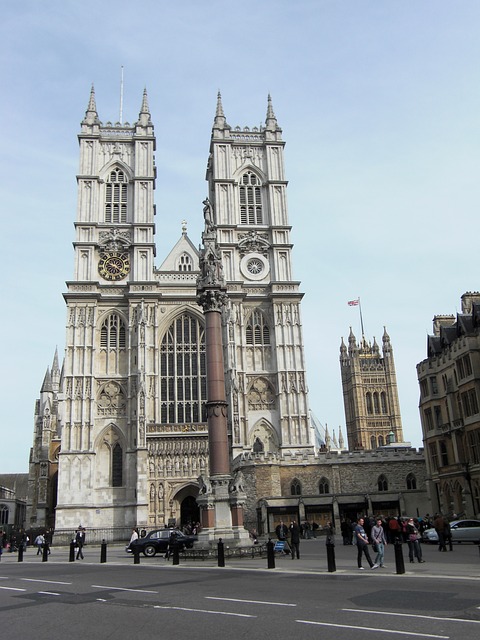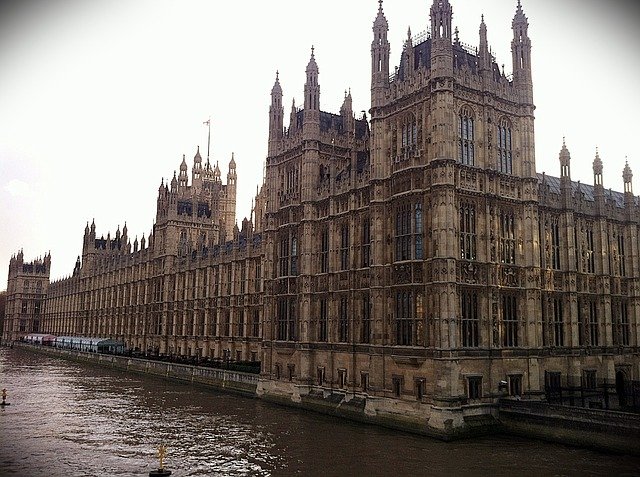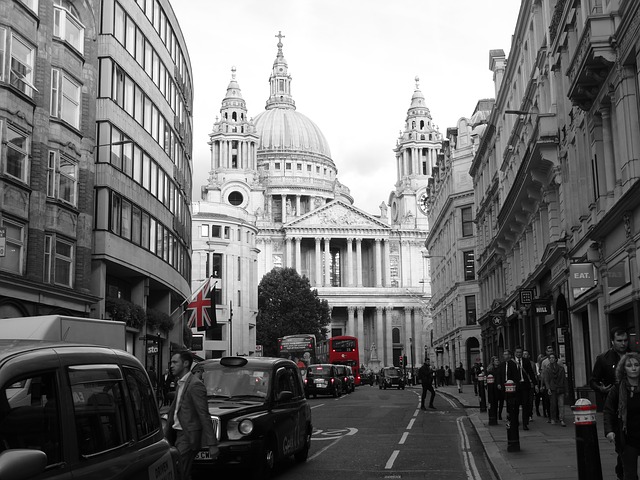Kensington Palace
Kensington Palace doesn’t look like a palace as we imagine it. No fairy tales, no splendours, nothing like Buckingham Palace. But it is a place steeped in history and of great importance to the British royal family.
History of Kensington Palace
The real name of Kensington Palace is actually Nottingham House, a palace built just outside London. The name Palace was only adopted after the architect Sir Christopher Wren (the same architect as St. Paul’s Cathedral) was hired by Mary II to transform the house into a palace so that she and her husband, King William III, could live there in 1689. William was asthmatic and she didn’t want him to suffer from the pollution of central London. Indeed, the pollution from the horses and carts of the late 17th century was a danger!
Queen Victoria and Kensington Palace
As King George III did not want to live in Kensington Palace, he gave the apartments to other members of the royal family. Among them, his fourth son, Edward. Edward was married to a German duchess, Victory, and they had a daughter in 1819. The girl’s name was Alexandrina Victoria and 18 years later she became Queen Victoria.
Her father died only eight months after she was born, so Victoria was raised by her mother. She spent her childhood and youth in the palace until, on June 20, 1837, she became Queen shortly after moving to Buckingham Palace.
You can visit Kensington Palace today thanks to Queen Victoria. It was she who asked Parliament for money to reform the Palace. Parliament said that it would make the money available on condition that she would allow paid visits.
In 1899 the state apartments were opened to the public and that is the way it is today.
What to see at Kensington Palace
King’s State Apartments
Inside the palace, visit the king’s apartments. You will be able to dazzle and photograph the painted walls to impress and even, who knows, intimidate the visitor who was about to meet the king.
Many people doubted that George I had royal blood, after all he was the 53rd in the line of succession to the throne. It was there that the Queen put paintings of the entire royal lineage in the Private Room, to show (almost draw) for those who still dared to doubt. Notice the painted ceiling and the tapestries around the room. The King’s Gallery has several famous paintings and a map, connected to a weather vane on the roof. William asked for it to be installed so that he could see in which direction his fleet was sailing. Of course, he didn’t know that the wind direction was different at each location.
Queen’s State Apartments
It was the place where Queen Mary II, and later other consorts of the Queen, slept and dressed (Queen’s Closet), ate their meals (Queen’s Dining Room), welcomed their friends and relaxed in their free time (Queen’s Drawing Room).
The Queen’s Drawing Room also includes a staircase, less ornate than the King’s, and a gallery, designed as a quiet and airy place where the Queen could enjoy small pleasures such as reading and embroidery.
Kensington Palace Gardens
As you leave the palace, look left at the statue of King William III and Queen Victoria in front of Kensington Palace. From this point you can also see the golden wind indicator at the top of the palace.
The statue of Queen Victoria was made by her daughter, Princess Louise, in 1893 – that is, Victoria was still alive. Note Louise’s signature on the base of the sculpture. She wore the coronation garments in 1837 at the age of 18.
Kensington Palace Gardens are part of the beautiful Kensington Gardens, which is the western part of Hyde Park and was used for many years as a hunting ground by King Henry VIII.
When William and Mary moved to the palace they began to create a separate park with specially commissioned gardens to suit their tastes. Other kings who lived in Kensington Palace also left their mark on the gardens.
Video
Royal Residence
In addition to being open to visitors, the Palace is always active for events and also as a royal residence. Many members of the royal family have already occupied the various apartments and ‘chalets’ into which Kensington Palace is divided.
Queen Mary, grandmother of Queen Elizabeth II, was born at Kensington Palace in 1867. The sister of today’s Tainha, Princess Margaret, lived with the family in the 1960s.
In the 1980s, Prince Charles and Princess Diana lived there and raised their two children, William and Harry. Even after the separation and until her death in 1997, Diana lived at Kensington Palace.
William now lives with his wife, Kate Middleton, and their three children in one of the apartments. Prince Harry asked Meghan Markle to marry him in the cottage that once lived within the complex, but today the couple lives in Windsor.
Princess Eunice, William’s cousin, also lives with her husband in the Kensington Palace complex.
For those who thought the Palace was just a building where Princess Diana lived for over 10 years, they are surprised to discover how much history this piece of land preserves and preserves with all the necessary care.
How to get to Kensington Palace in London?
The nearest Tube stations are Queensway (central line) and High Street Kensington (District, Circle and Piccadilly lines). Both are about a 10-15 minute walk away.
Lines 70, 94 and 148 stop at Bayswater Road (north of the Palace).
Lines 9, 10, 49, 52, 70 and 452 stop at Kensington High Street.
Kensington, London W8 4PX
https://www.hrp.org.uk/kensington-palace/
https://goo.gl/maps/Es6mHvJfVeL9EB1A7

